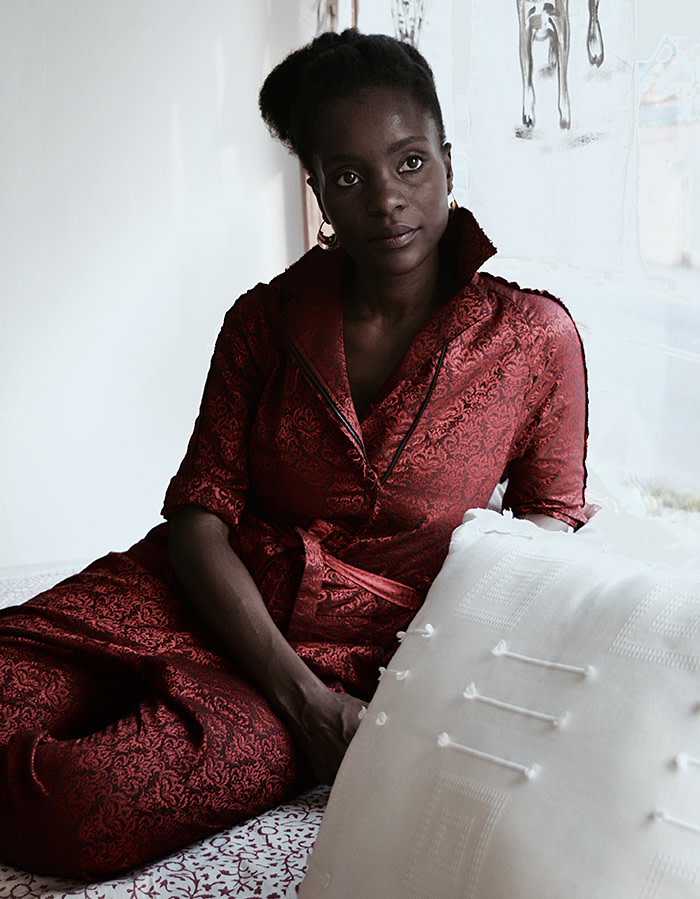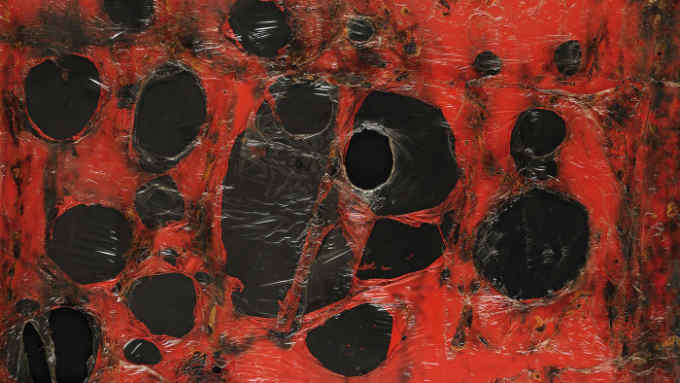Ghana arrives at the Venice Biennale, bringing new narratives with it

Roula Khalaf, Editor of the FT, selects her favourite stories in this weekly newsletter.
There’s no more fitting place to work with plaster than Venice, the stucco-lined city. But the interiors of Ghana’s exhibition spaces at the 58th Biennale are unlikely to resemble the shimmering walls of a 16th-century palazzo. Along with Pakistan and Madagascar, this is Ghana’s first appearance at the Biennale, and under the guidance of the architect David Adjaye, soil has been imported from Ghana. Made into a render the colour of dark sand, it will line a series of elliptical chambers containing the work of six artists.
“You really will be in Ghana when you walk in,” Adjaye says, referring to the materials used as well as the pavilion’s formal quality, derived from the country’s regional architecture, where cooking, sleeping and other activities take place in these individual, chamber-like spaces. “We’re testing out what a national African pavilion can be, creating the context of a sub-Saharan country.”
It’s not always easy for African nations to have a presence in Venice, for reasons ranging from the economic and the geographic to the complexities of the Biennale system itself. In 2017 Nigeria came, but as a private initiative; it is not returning this year, and Algeria has dropped out at the last minute.
The Ghana project, by contrast, is entirely supported by the ministry of tourism. Both Adjaye and the pavilion’s curator, Nana Oforiatta Ayim, have been consulting with the Ghanaian government for several years about the creation of new national museums and art initiatives (Adjaye is building a new national cathedral in Accra; both are working on the transformation of a 17th-century castle into a museum). It seems that their influence has comfortably extended to taking messages about Ghana’s contemporary cultural position further afield.

Oforiatta Ayim’s initial impetus was to create a show that threw the spotlight on a single contemporary artist living and working in Ghana. But advice from Okwui Enwezor, curator of the 2015 Biennale and a consultant on this project until his death in March this year, changed her mind. “He said, ‘You have to come out all guns blazing’,” she tells me over the phone from Venice, as the installation is nearing completion.
As a result, the six artists cross generations and genders. Felicia Abban was Ghana’s first female professional portrait photographer, who worked for its first president following the country’s independence from Britain in 1957. El Anatsui is the continent’s most bankable artist, with his largest bottle-top works fetching up to $2m at auction. The painter Lynette Yiadom-Boakye has won numerous prizes, including the Pinchuk Future Generation award in 2012, and was nominated for the Turner Prize in 2013. International acclaim has been delivered in spades to the film-maker John Akomfrah in the past decade. The younger Ibrahim Mahama and video-maker Selasi Awusi Sosu perhaps represent a more current and urgent view of the country’s artistic practice.
Oforiatta Ayim sees pairings between the participants. The politics of representation and portraiture shared by Abban and Yiadom-Boakye, for example; stories of memory, loss and restitution in the work of Akomfrah and Sosu; the reappropriation of existing objects into new narratives on the part of El Anatsui and Mahama (the latter often using tattered jute sacks to tell the story of colonial trade).
The fact that only some of these artists actually live in Ghana is tied to the country’s colonial past. Akomfrah was born in Accra, but moved with his family to the UK after the 1966 coup. Yiadom-Boakye was born in Britain, and, according to Oforiatta Ayim, hasn’t been to Ghana for 20 years or so. “But it is part of her identity. When we’re together we talk a lot about growing up Ghanaian in Europe,” she says. The curator herself grew up in Germany and the UK, though with frequent visits to Ghana, and speaks English, German, French, Russian and Twi (a Ghanaian language).
In 2011, however, she moved permanently to Accra. “It sometimes feels like everything happens in the diaspora,” she says. “That’s important and it’s part of who we are. But now we need to focus on evolving work in our continent.”
Adjaye agrees. “The idea of colonisation lingers, but it can’t be ‘bad past, bright future,’” he says. “We have to bring the past and present together now.” His and Oforiatta Ayim’s Venice installation — a classical regional architecture brought into service to show several strands of contemporary art — is a start.
May 11-Nov 24, labiennale.org
Follow @FTLifeArts on Twitter to find out about our latest stories first. Subscribe to FT Life on YouTube for the latest FT Weekend videos

Comments